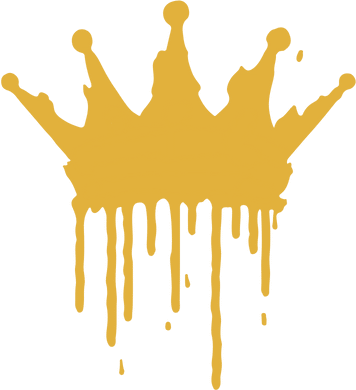Gabrielle’s Ideals for Heart Cut Diamonds #
(Table: 59–64% | Depth: 52–60% | Pavilion Depth: 47–55% | Pavilion Angle: 39–41° (40.2°–41.25°) | Crown Angle: 32–37° (33.7°–35.8°) | Crown Height: 12–14% | Girdle: 2.5–4.5%)
The heart-shaped diamond is the ultimate symbol of love and romance. As a modified brilliant cut, it combines the brilliance of a round with a distinctive shape that requires precise proportions to maintain symmetry, light performance, and a clearly defined silhouette.
The heart cut dates back to the 16th century, with historical records showing that Mary, Queen of Scots, once sent a heart-shaped diamond ring to Queen Elizabeth I as a token of friendship. Today, heart diamonds are a bold and sentimental choice, perfect for those who love a romantic and eye-catching design.
1. What Is a Heart Cut Diamond?
A heart diamond is one of the most technically complex shapes to cut, as it requires perfect symmetry to ensure the lobes are evenly proportioned and well-defined. The two halves must be identical, the cleft must be distinct but not too deep, and the tip must remain sharp but not overly fragile.
When cut well, a heart diamond delivers exceptional brilliance and fire, but poorly cut stones can appear lopsided, too narrow, or too elongated.
Why Choose a Heart Diamond?
-
Romantic and Symbolic:
The ultimate symbol of love, passion, and commitment.
-
Brilliant Faceting:
A well-cut heart diamond is a modified brilliant cut with strong brilliance and fire.
-
Unique Statement Piece:
A heart cut is distinctive and eye-catching, unlike common shapes like rounds or ovals.
-
Elongated or Wide Shape Options:
Hearts can be broader or more elongated, allowing for personal preference in proportion.
Potential Downsides of a Heart Diamond
-
Shape Precision Is Critical:
The lobes must be even, the cleft well-defined, and the tip properly proportioned—any imbalance ruins the shape.
-
Smaller Stones Lose Definition:
Heart diamonds under 0.50 carats can lose their distinct heart shape, making them appear more rounded.
-
Vulnerable Tip:
The pointed tip of a heart diamond is prone to chipping and requires a secure setting.
-
Bow-Tie Effect:
Some heart diamonds may exhibit a slight dark bow-tie shadow in the center, similar to ovals.
-
Less Common for Engagement Rings:
While striking, hearts are less traditional than rounds or ovals, which can affect long-term wearability and resale value.
2. The 4Cs for a Heart Cut Lab Diamond
While the 4Cs—Cut, Color, Clarity, and Carat—are essential for every diamond, the cut is especially critical for heart cut diamonds, as it directly influences their light performance and overall symmetry.
Cut – The Heart of Heart Cut Brilliance
Getting the cut right means dialing in those key proportions:
-
Table Percentage (IGI’s ideals: 59–64% | Gabrielle’s Ideals: 59–64%):
The table is the largest facet where light enters the diamond. Maintaining this range ensures even light distribution and enhances both fire and brilliance.
-
Depth Percentage (IGI’s ideals: 52–60% | Gabrielle’s Ideals: 52–60%):
Depth defines the stone’s overall height relative to its width. An optimal depth allows light to bounce efficiently within the diamond, maximizing sparkle.
-
Pavilion Depth (IGI’s ideals: 47–55% | Gabrielle’s Ideals: 47–55%):
The pavilion is where internal reflections occur. Proper pavilion depth directs light back through the crown for enhanced brilliance.
-
Pavilion Angle (IGI’s ideals: 39–41° | Gabrielle’s Ideals: 40.2°–41.25°):
This angle is crucial for balancing brilliance and scintillation, ensuring the heart shape retains its sparkle.
-
Crown Angle (IGI’s ideals: 32–37° | Gabrielle’s Ideals: 33.7°–35.8°):
The crown angle disperses light into its colorful spectrum (fire) while maintaining overall brightness.
-
Crown Height (12–14%) & Girdle (2.5–4.5%):
These factors contribute to the diamond’s durability and appearance, ensuring the stone looks stunning and withstands everyday wear.
Pro Tip: Think of the table and pavilion as the duo that controls fire and brilliance, while the depth and crown work together to manage light dispersion. Even minor deviations in one area can be offset by precision in another, resulting in a beautifully harmonious stone.
Color – Enhancing the Icy Sparkle
Heart cut diamonds are crafted to showcase a bright, white appearance. Choosing the right color grade enhances their natural sparkle:
-
D–F (Colorless): Provides a pristine, icy-white look that maximizes brilliance.
-
G–H (Near Colorless): Offers an excellent balance between value and that coveted white radiance.
-
I–J: May introduce a subtle warmth—ideal if you plan on setting your diamond in yellow or rose gold, which can complement and balance the tone.
Pro Tip: For settings in yellow or rose gold, an H–J color grade works well, as the metal helps mask any slight warmth.
Clarity – Focus on Structural Integrity
Lab diamonds generally feature fewer inclusions than natural stones. For heart cut diamonds, aim for eye-clean clarity to ensure nothing detracts from the stone’s luminous performance:
-
VS1–VS2: The sweet spot—providing excellent clarity and value without visible inclusions.
-
SI1–SI2: Acceptable if any inclusions remain invisible to the naked eye.
-
VVS1–VVS2: Nearly flawless, though these stones come at a premium.
-
F–IF: Flawless diamonds exist but are generally unnecessary for most buyers.
Pro Tip: A VS1–VS2 clarity heart cut typically strikes the best balance between beauty and affordability.
Carat – More Size for Your Budget
Lab diamonds allow you to choose larger stones without sacrificing quality. However, a well-cut heart diamond with ideal proportions will always appear more brilliant than a slightly larger stone with inferior cut quality.
Pro Tip: Prioritize cut quality over carat size—a perfectly proportioned 1.50 ct heart cut can look larger and more dazzling than a poorly cut 1.75 ct stone.
3. Additional Considerations
Alternative Option – Create a Heart from Pear Diamonds
For a unique take on a heart diamond, consider using two pear diamonds set together to form a heart. A skilled cutter can ensure the pears are a near-perfect match, making the shape look seamless.
This approach offers several advantages:
-
Customization Possibilities: Set the heart tilted inward, creating an asymmetrical, modern look.
-
Two-Tone Effect: Using different colored pears can create a stunning contrast for a one-of-a-kind design.
-
Potential Cost Savings: This may be more cost-effective than sourcing a single well-cut heart diamond.
Pro Tip: If you’re open to a custom-designed heart, ask your jeweler about using two matched but different colored pear diamonds for a more creative, one-of-a-kind setting.
Symmetry & Polish
-
Symmetry: Excellent symmetry ensures the diamond reflects light evenly for an elegant, well-proportioned appearance.
-
Polish: Excellent or very good polish is the best choice to maximize the brilliance of the shape.
Fluorescence
-
None or Faint fluorescence is best—strong fluorescence may create a hazy effect.
Certification
-
Always buy IGI- or GIA-certified diamonds to ensure accurate grading.
Setting Considerations
-
Protect the Tip!
The pointed end of a heart diamond is the most fragile part—choosing a setting with a prong covering the tip prevents damage.
-
Best Settings:
-
Three-prong or five-prong solitaires highlight the heart’s shape while providing security.
-
Bezel settings offer extra protection but can slightly reduce sparkle.
-
Halo settings enhance perceived size and add brilliance.
-
Final Thoughts
A heart diamond is a romantic and deeply symbolic choice, offering both brilliance and a unique shape that stands out. However, precision in cut and symmetry is everything—a well-cut heart is breathtaking, while a poorly cut one can appear lopsided or misshapen.
By following Gabrielle’s Ideals, you can confidently choose a heart diamond that is bright, balanced, and beautifully cut.
Happy diamond hunting—may your heart diamond be as radiant as your love!


